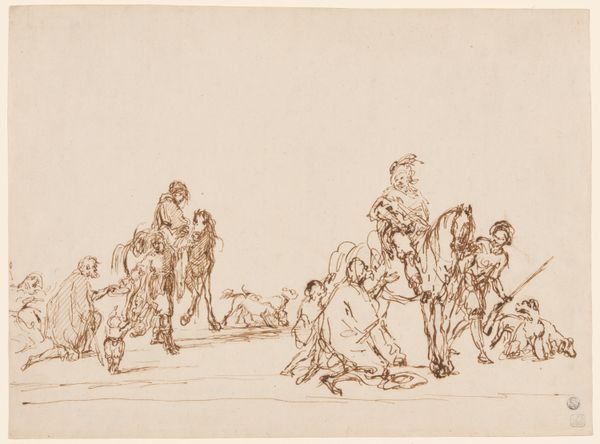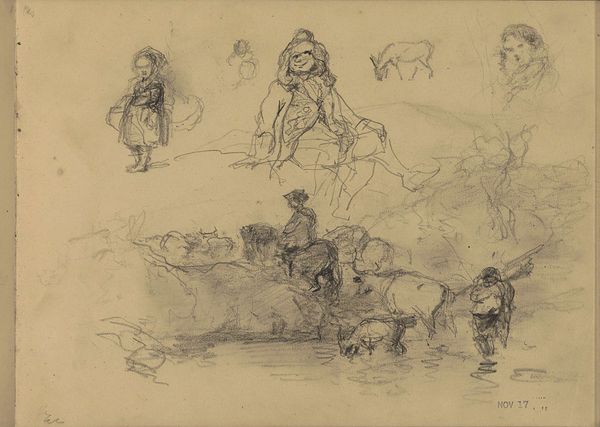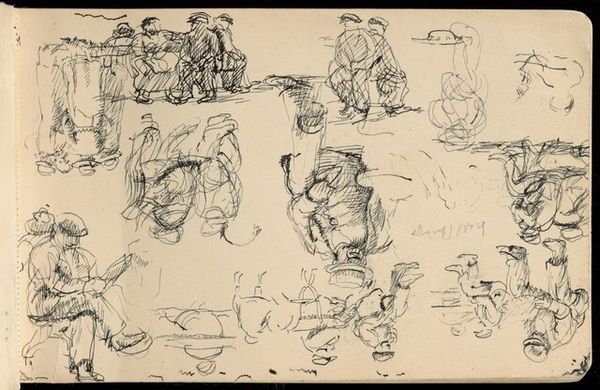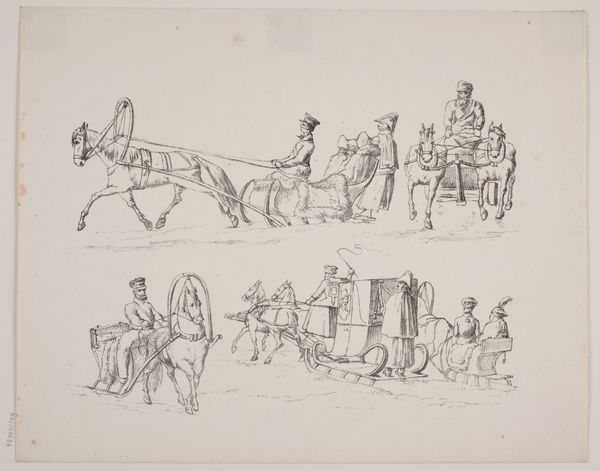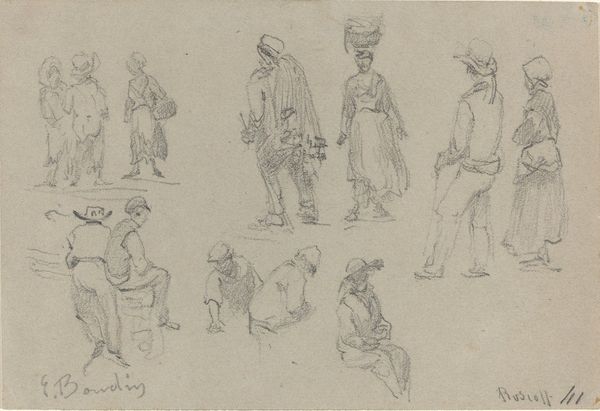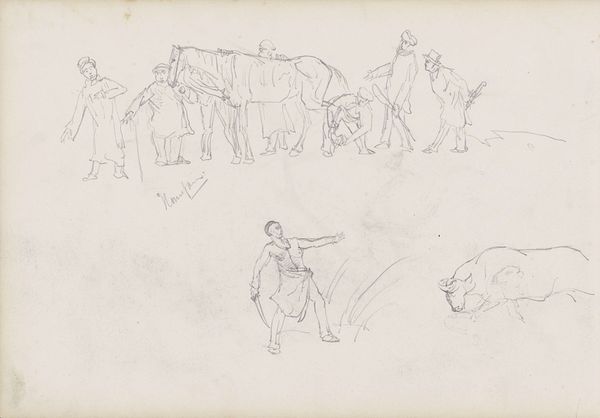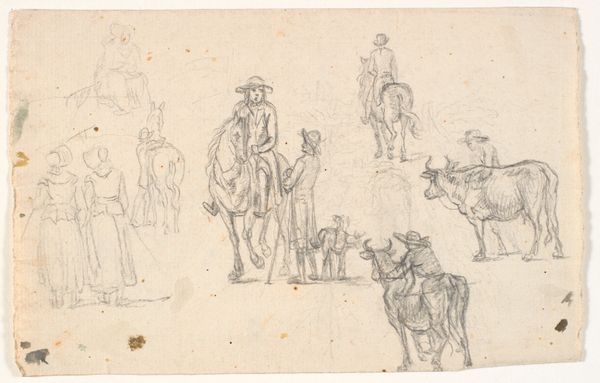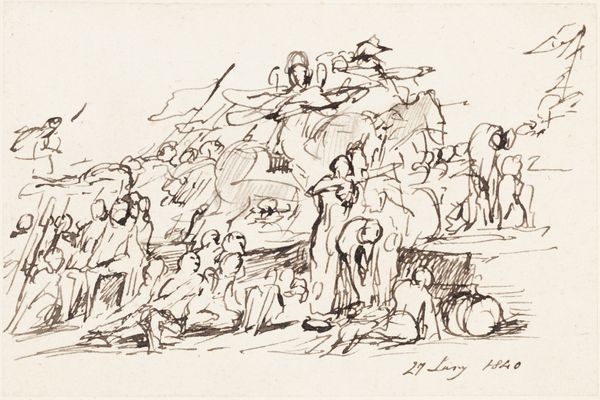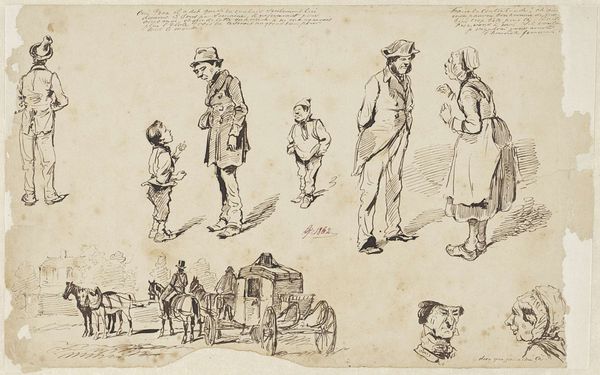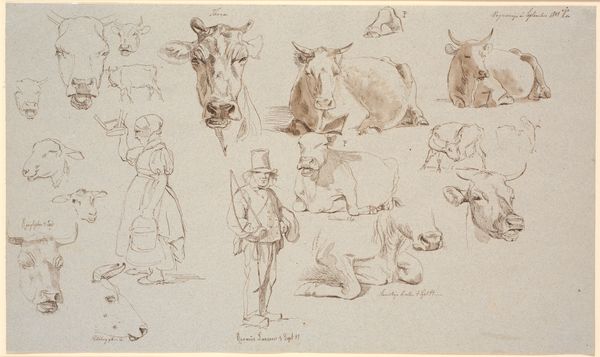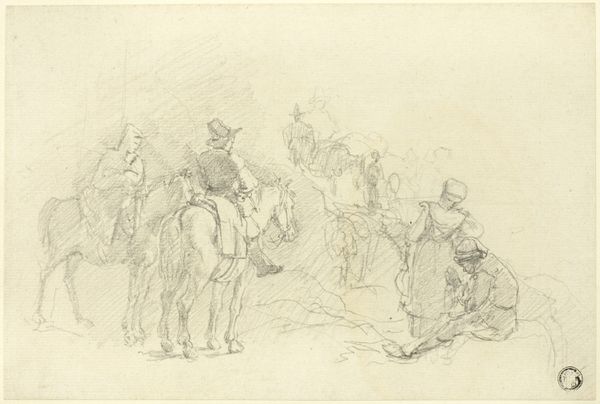
Studieblad met verschillende historische figuren 1818 - 1863
0:00
0:00
willempieterhoevenaar
Rijksmuseum
drawing, pencil
#
portrait
#
drawing
#
pen sketch
#
figuration
#
personal sketchbook
#
sketchwork
#
ink drawing experimentation
#
pen-ink sketch
#
pencil
#
sketchbook drawing
#
genre-painting
#
storyboard and sketchbook work
#
academic-art
#
sketchbook art
#
fantasy sketch
#
initial sketch
Dimensions: height 191 mm, width 322 mm
Copyright: Rijks Museum: Open Domain
Curator: I’m struck by the intimate feeling of this sketch, like stumbling upon the artist’s private thoughts. Editor: Indeed. We’re looking at “Studieblad met verschillende historische figuren”—Study Sheet with Various Historical Figures—attributed to Willem Pieter Hoevenaar, created sometime between 1818 and 1863. It’s currently housed here at the Rijksmuseum. You know, what draws me in is the density of images, all these faces and figures clustered together like characters in a forgotten myth. Curator: Precisely! It is intriguing. The clustering might reflect the 19th-century academic focus on historical narratives. These could be studies for larger, more formalized works, reflecting the historical genre-painting popular during that period, and Hoevenaar's involvement with groups like the Felix Meritis society is noteworthy in the proliferation of art for the public good. Editor: And they all have this faintly theatrical air. It's like watching actors between scenes, each lost in thought, and these characters repeat throughout art history--a man on a horse, figures gathered talking to one another... they seem so archetypal. I wonder, were the hats indicative of anything significant to period viewers? I see a common visual marker uniting these figures. Curator: The hats, you’re right, are prevalent and denote social standing or perhaps specific historical eras Hoevenaar was interested in representing, reflecting back to academic values around historical fidelity, costuming, and detail to construct realism and project values to contemporary viewers. It’s an early period of what we know now about visual symbolism and political projections, for instance. Editor: So, these symbols were really working hard culturally? As preliminary sketches they would have helped to fix ideas as well. To me, their incompleteness gives a vulnerability and insight into their working method that a polished history painting lacks. It shows you how much time the artist took. Curator: The act of sketching itself gained prestige as part of the romanticisation of an artists own hand as touched by genius at the time. In many ways they are as relevant as more "finished" pieces. The Rijksmuseum gives these the prestige that would have been initially denied these "studies." It's important in thinking about the artwork's journey after the artists is gone. Editor: The psychological effect of unfinished quality is fascinating to think about now--thanks! It certainly adds layers to the whole narrative. Curator: Glad to bring a different lens to your impression of this fantastic piece!
Comments
No comments
Be the first to comment and join the conversation on the ultimate creative platform.
